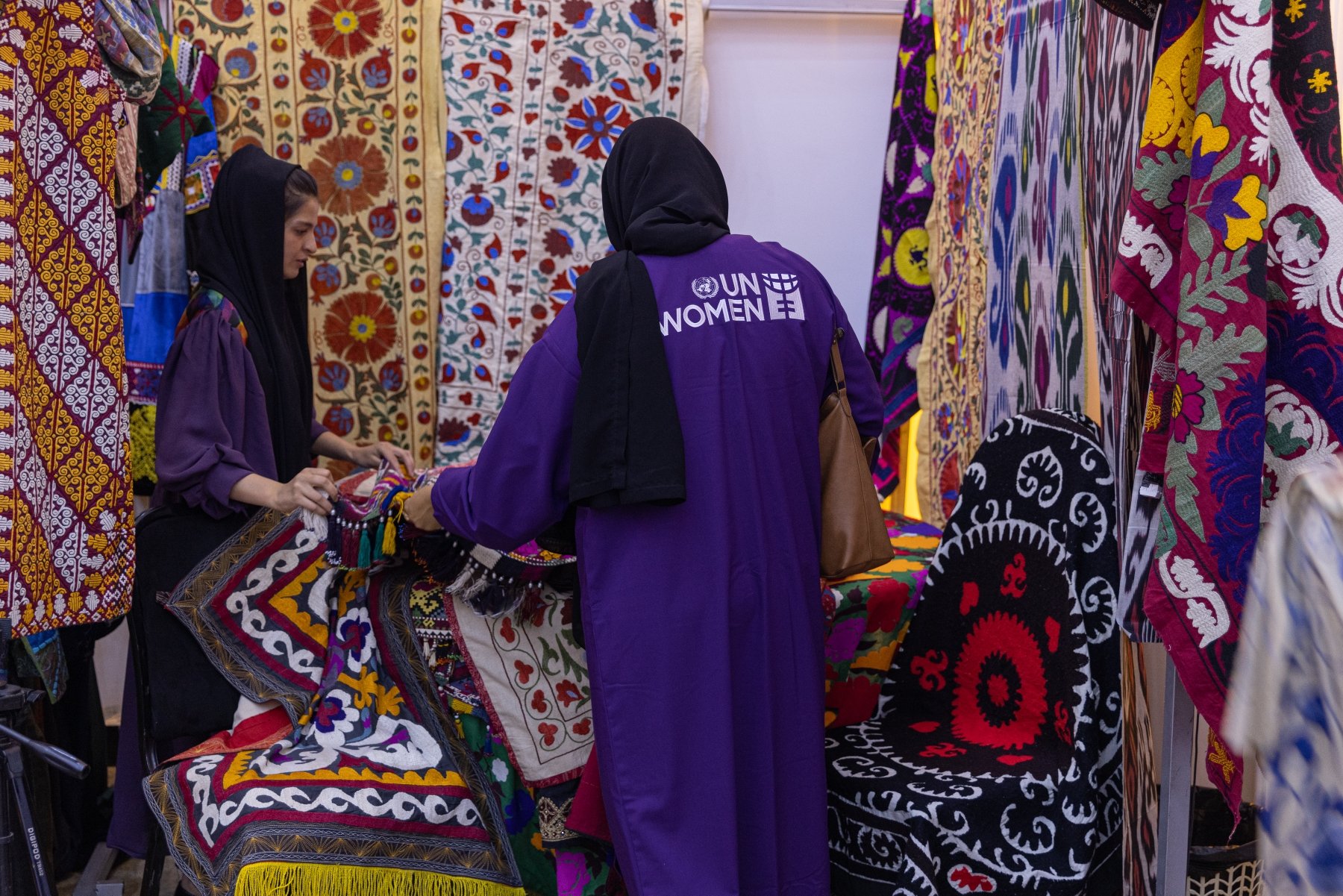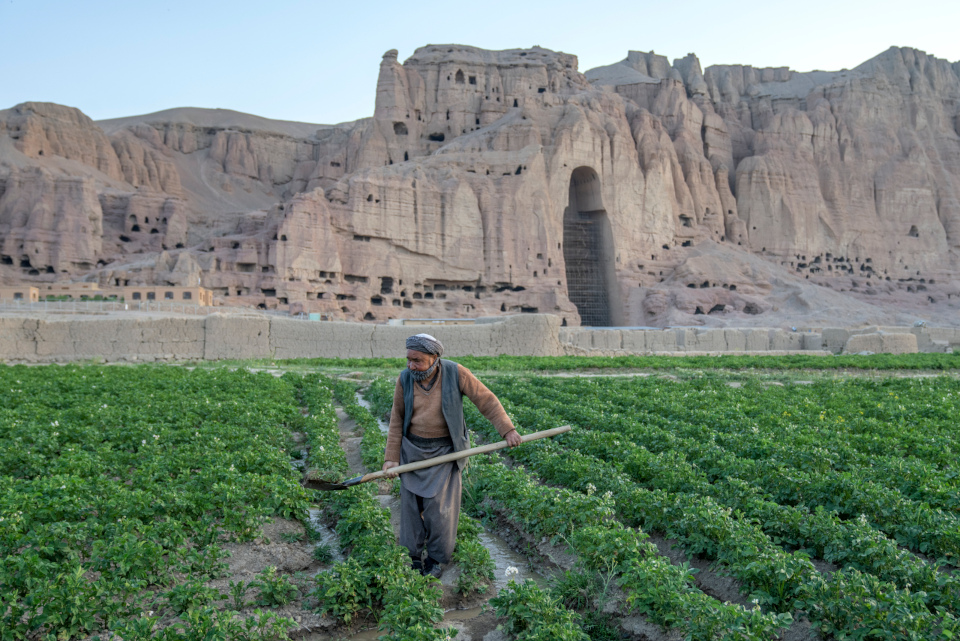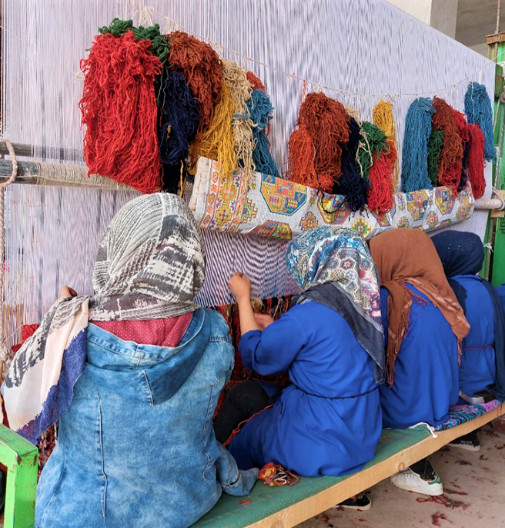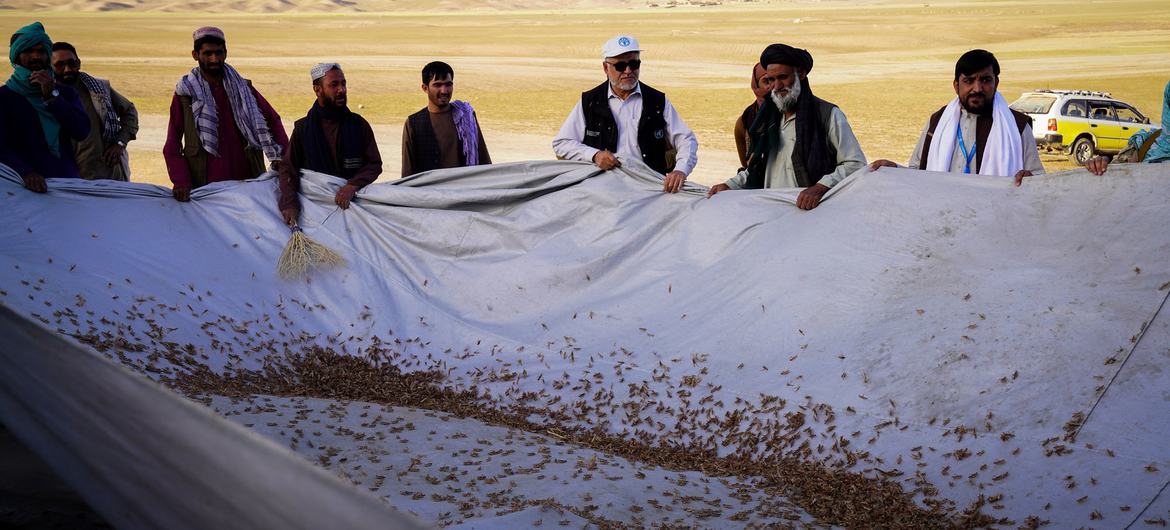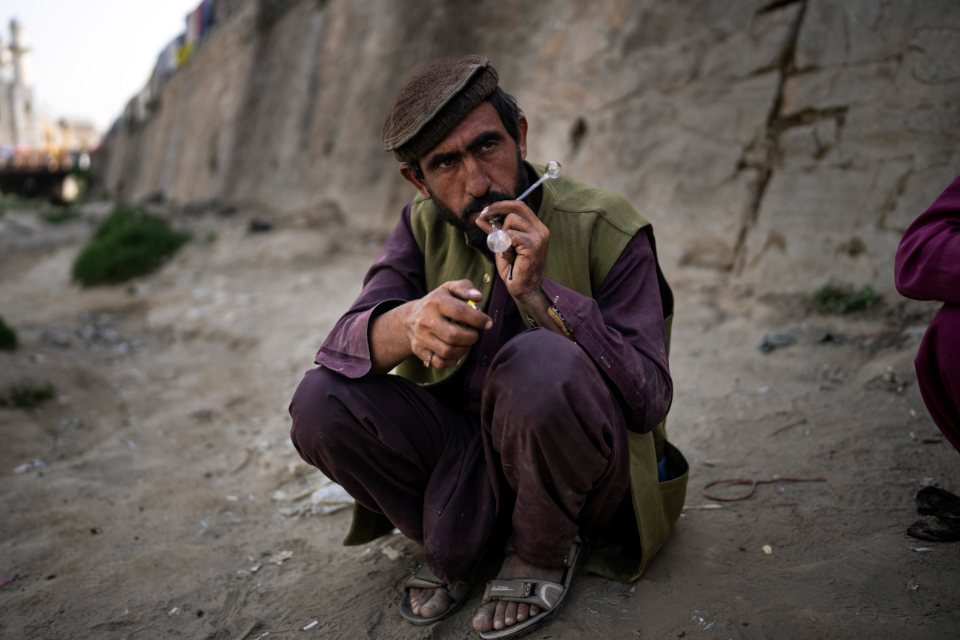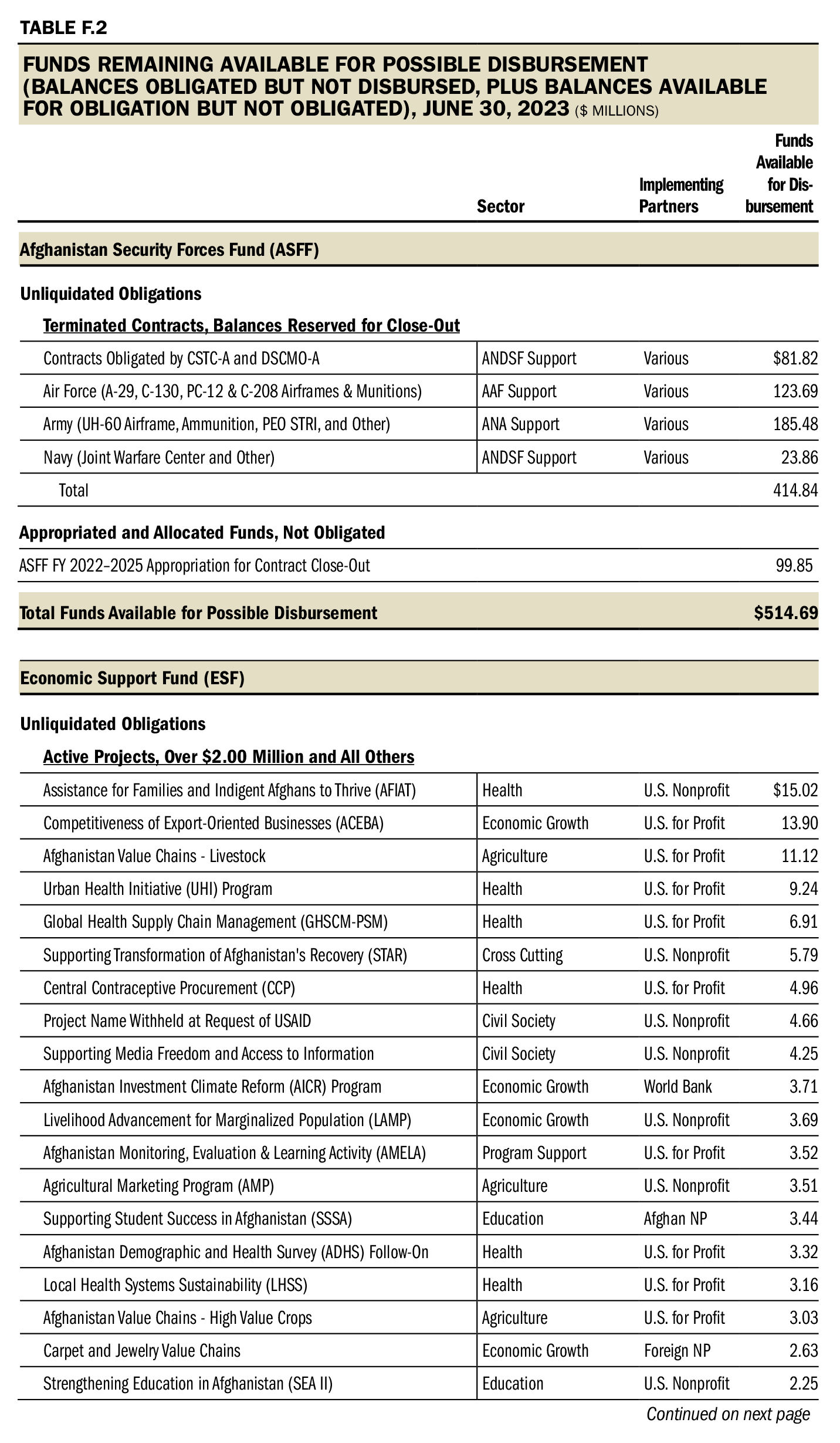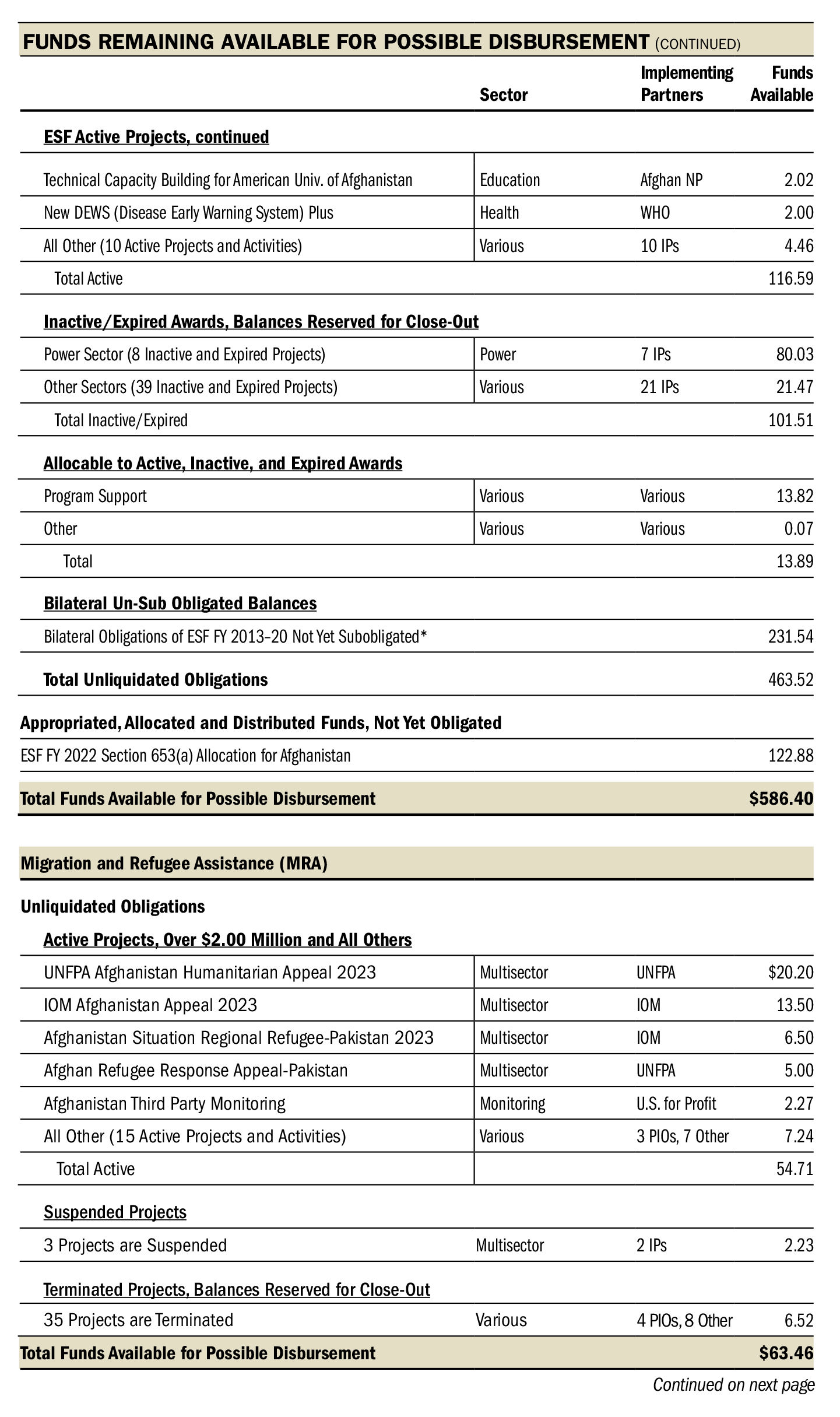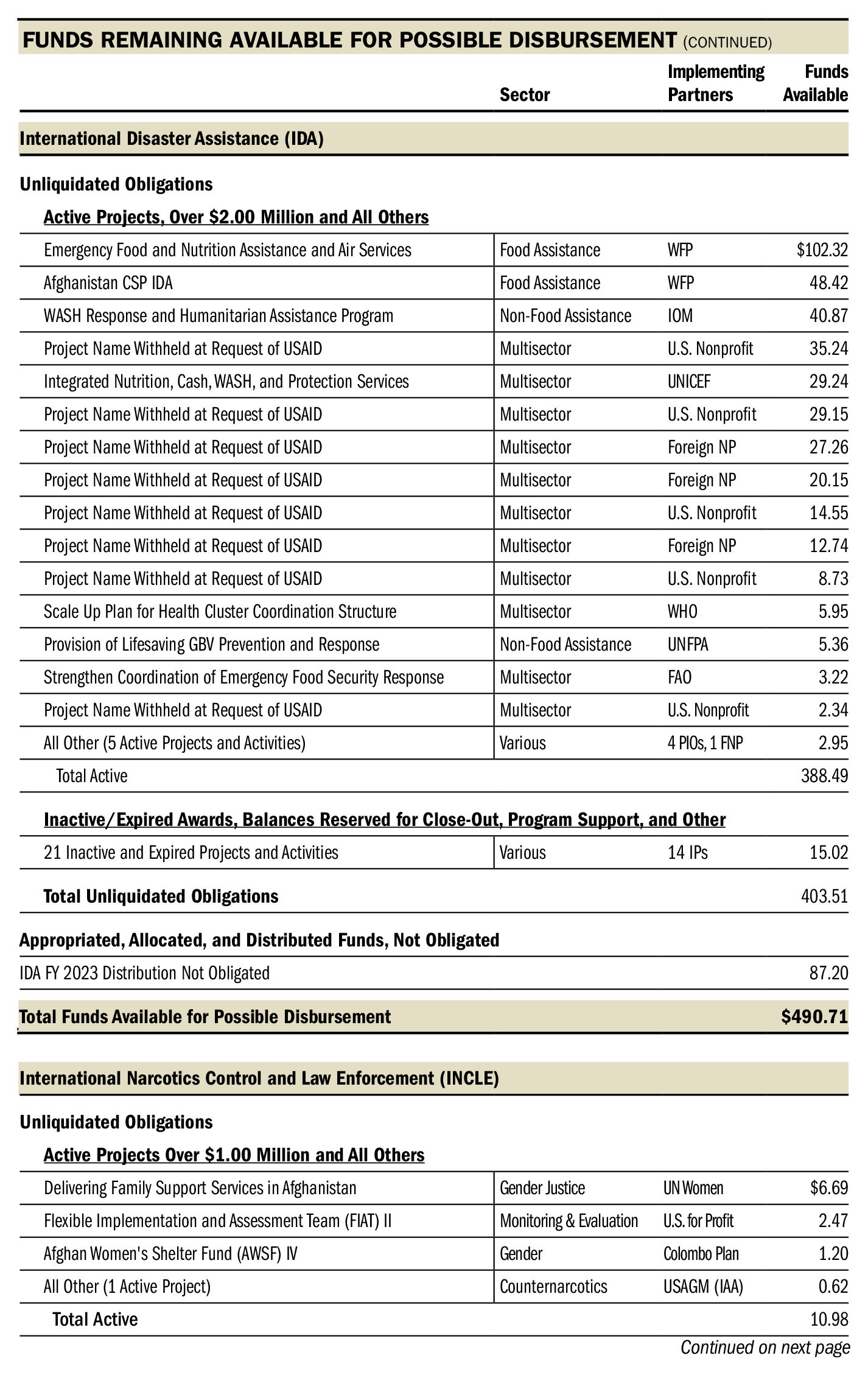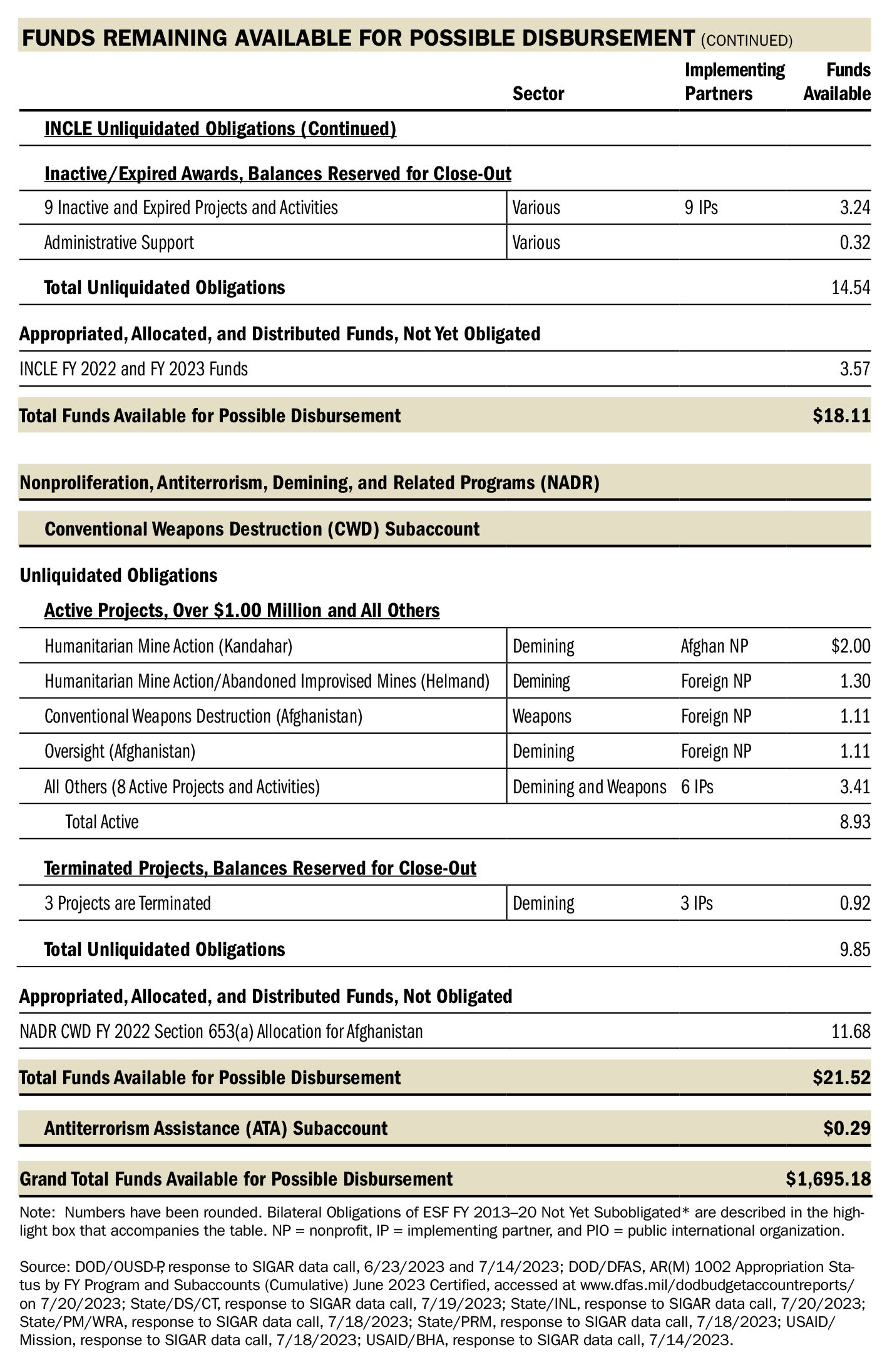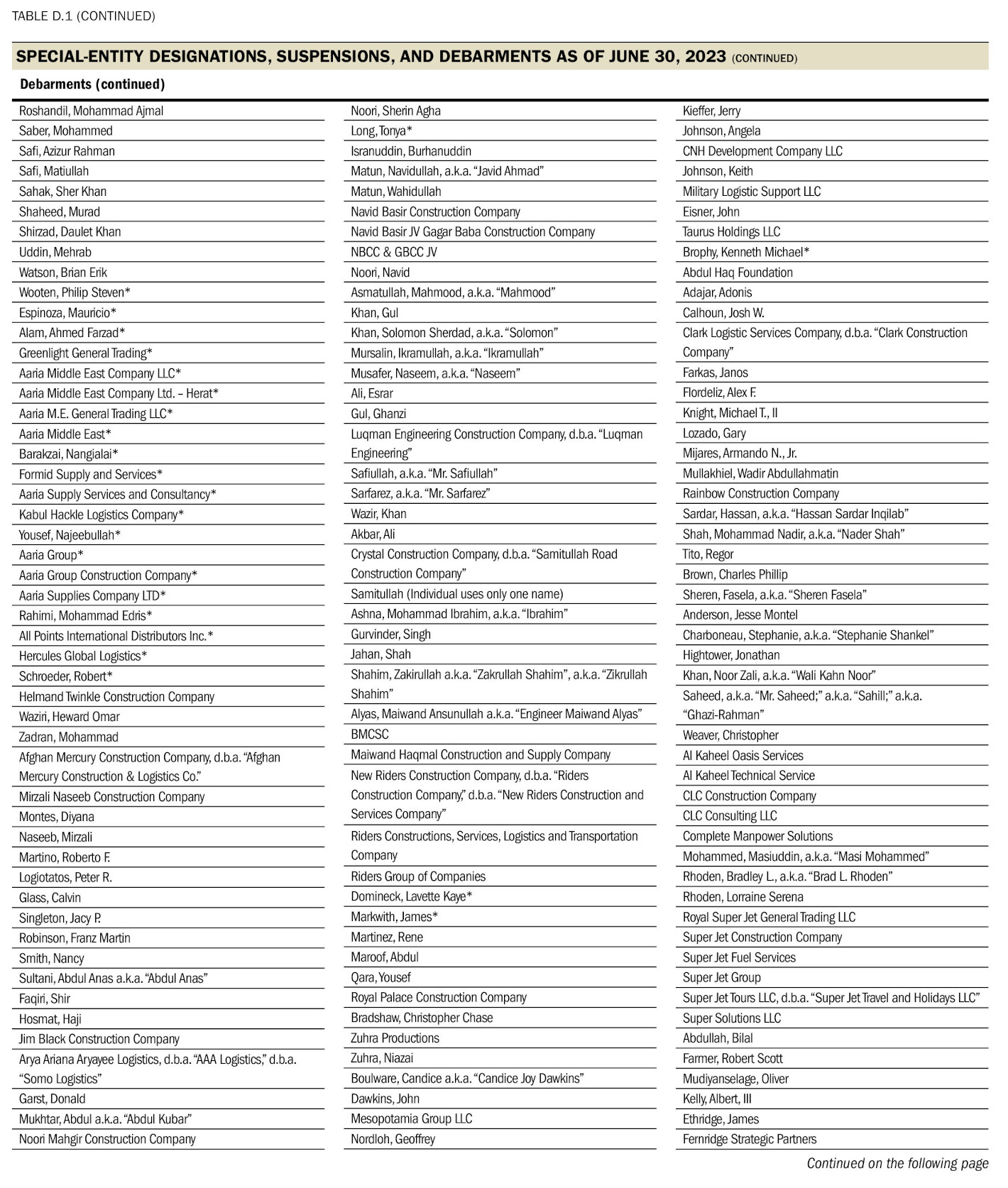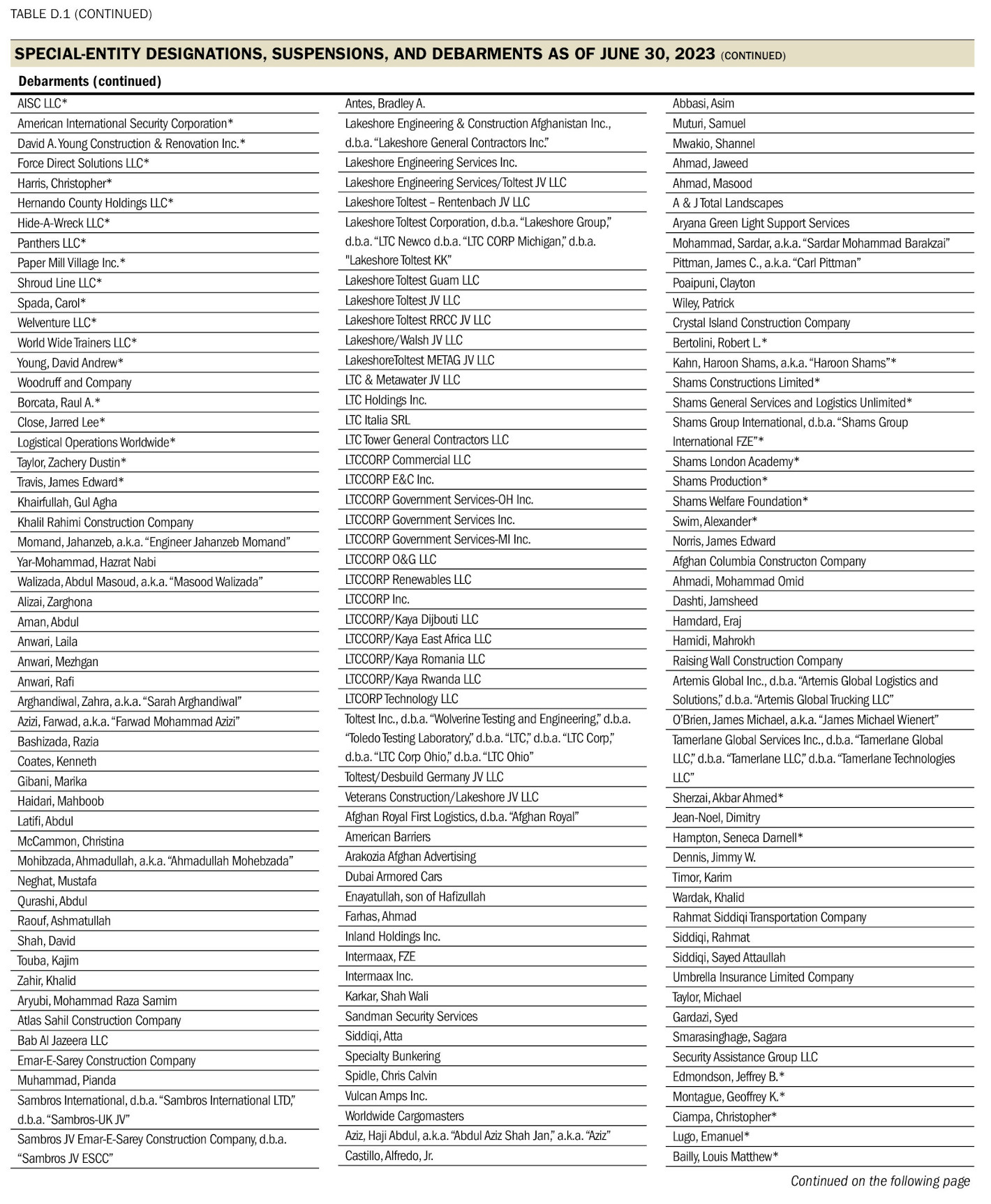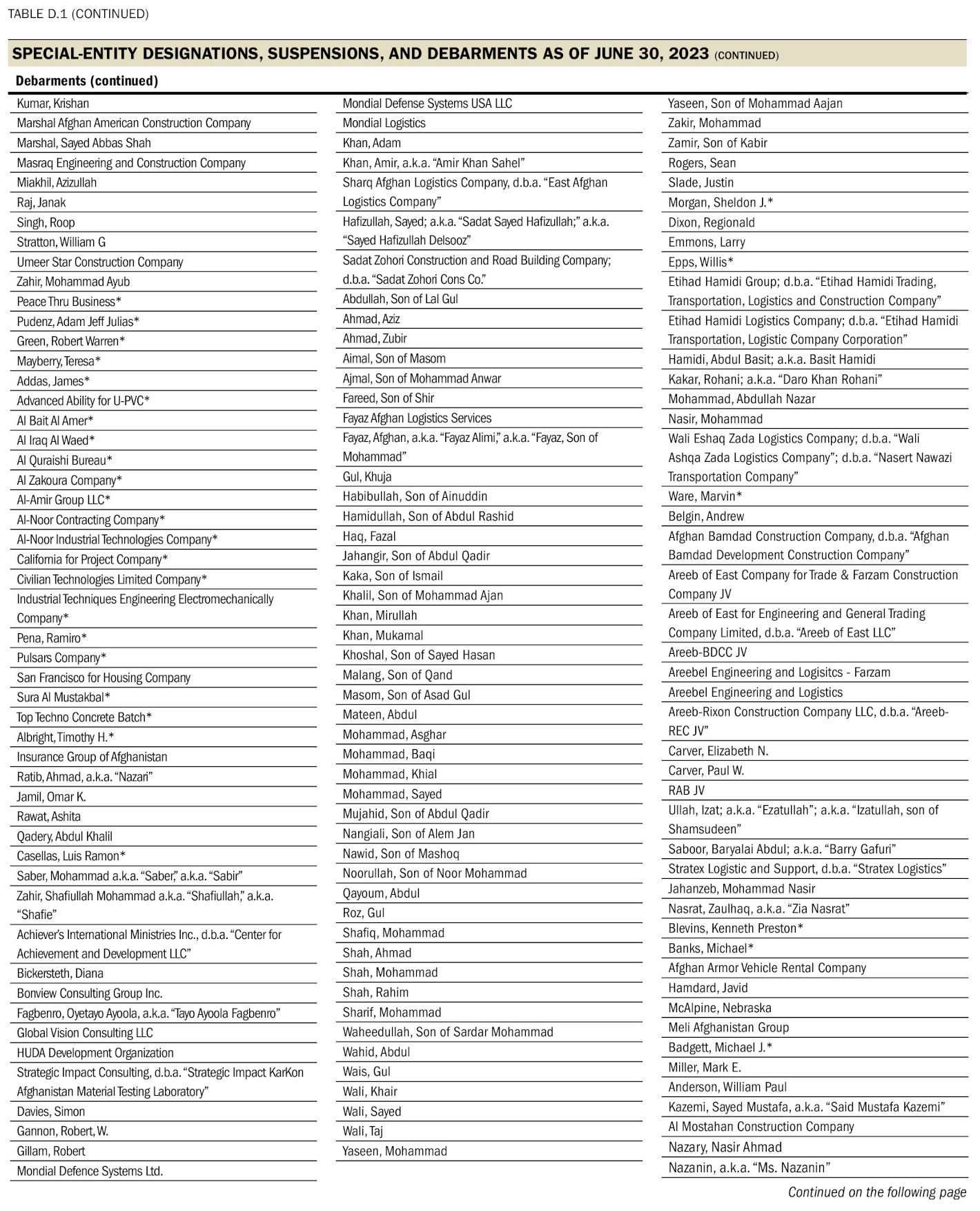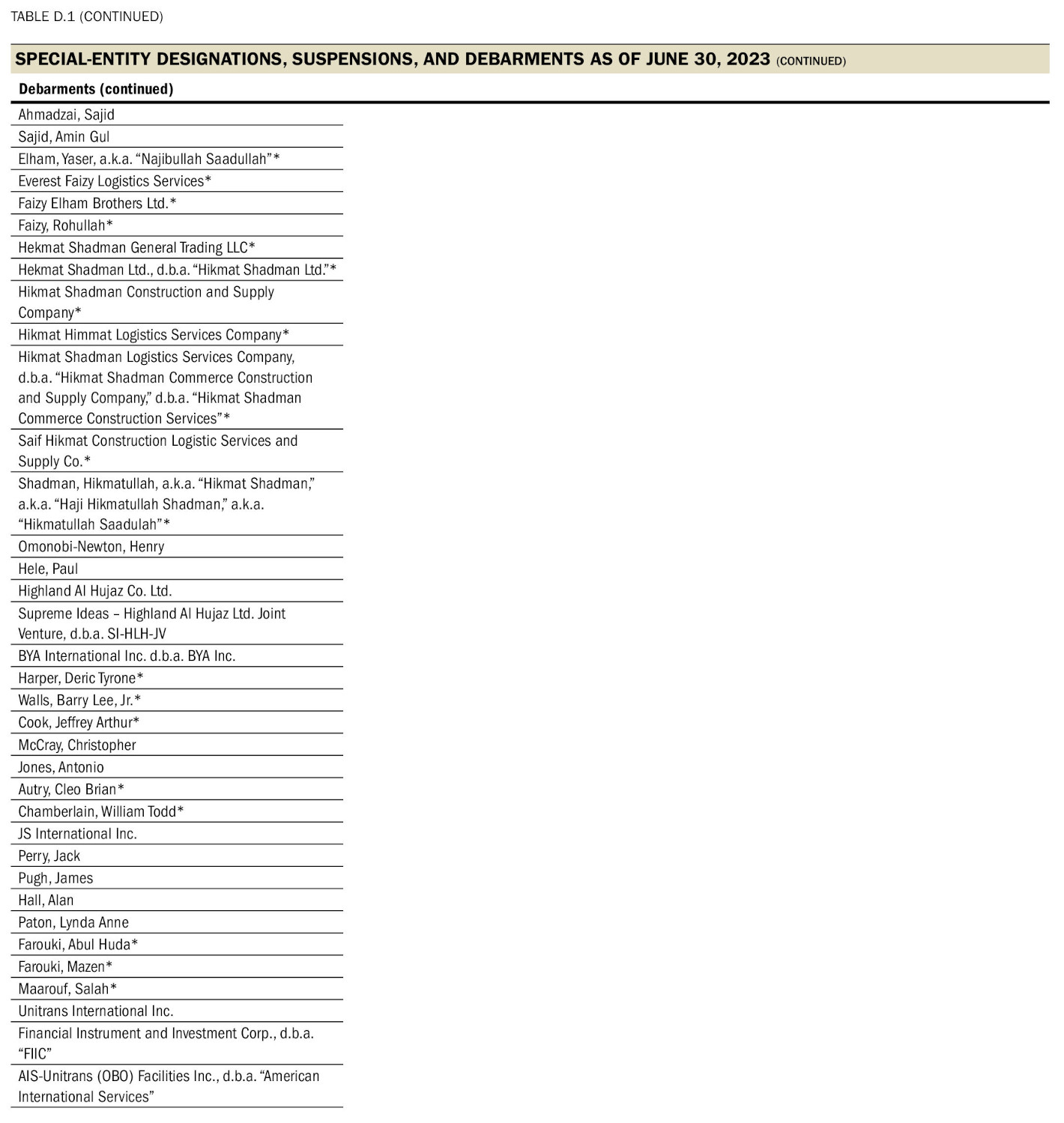This quarter, SIGAR issued eight products, including this quarterly report. SIGAR work to date has identified approximately $3.97 billion in savings for the U.S. taxpayer.
From 2009 through June 2023, SIGAR issued 465 audits, alert letters, and inspection reports, and made 1,297 recommendations to recover funds, improve agency oversight, and increase program effectiveness.
To date, SIGAR investigations have resulted in a cumulative total of 169 criminal convictions. Criminal fines, restitutions, forfeitures, civil settlements, and U.S. government cost savings and recoveries total approximately $1.67 billion.
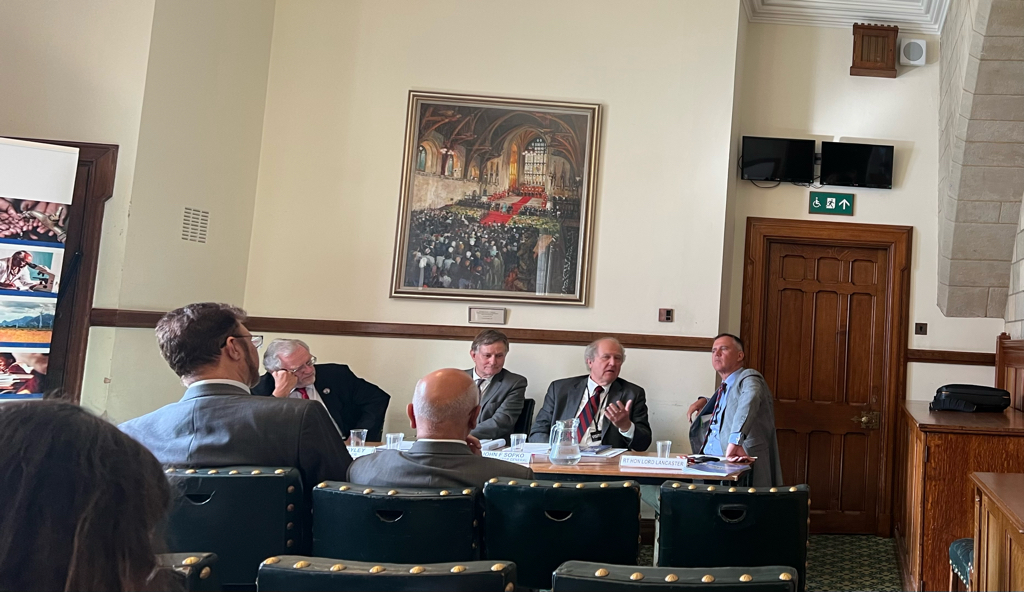
IG Sopko Meets UK Policymakers in London to Discuss Lessons from Afghanistan Reconstruction
At the invitation of the United Kingdom’s Independent Commission for Aid Impact (ICAI), Inspector General John Sopko participated in two July events in London to discuss SIGAR’s reporting on critical lessons from the reconstruction of Afghanistan that could be applied to other conflicts, including Ukraine.
On July 10, IG Sopko and ICAI Commissioner Sir Hugh Bayley spoke at a Royal United Services Institute sponsored event titled, “Learning from Aid Spending in Afghanistan for Other Fragile/Conflict States.” This public event was widely attended by UK policymakers, journalists, academics, and the public. Later that day, IG Sopko and Commissioner Bayley briefed members of Parliament at a closed session hosted by John Speller, the Deputy Chair of the House of Commons Defense Committee, and the UK Delegation to the NATO Parliamentary Assembly. The briefing focused on ICAI’s latest lessons learned report on the UK’s development efforts in Afghanistan and SIGAR’s lessons learned reports on Afghanistan reconstruction. During both events, IG Sopko discussed lessons from Afghanistan applicable to other conflicts, including Ukraine, such as addressing endemic corruption, improving international donor coordination, and setting realistic timelines for achieving progress with assistance efforts.
Over the course of several days, IG Sopko held meetings with numerous individual UK policymakers and parliamentarians, including representatives from the Office for Conflict, Stabilization, and Mediation of the UK Foreign, Commonwealth, and Development Office. He also met with multiple former Afghan government officials and Afghan human rights advocates. During these meetings, IG Sopko discussed the current situation in Afghanistan and SIGAR’s continued oversight for Congress of U.S. assistance to the Afghan people. In addition to learning more about the reality on the ground in Afghanistan and the Taliban’s activities, SIGAR obtained important information for ongoing and planned oversight projects focused on protecting current U.S.-funded assistance efforts in Afghanistan. This included allegations of numerous problems within UN programs in Afghanistan, which confirmed and supplemented information previously obtained by SIGAR.
Finally, at the invitation of King’s College London and the Afghan Institute for Strategic Studies, IG Sopko delivered the keynote address at a conference titled, “Reimagining Afghanistan: Ways Forward.” This public event was widely attended by UK policymakers, academics, international journalists, and members of the Afghan diaspora. IG Sopko spoke about the many oversight challenges the United States, the United Kingdom, and other international donors face while providing humanitarian aid to the Afghan people, as well as SIGAR’s ongoing oversight work for Congress to help ensure that this assistance is protected from diversion by the Taliban.
SIGAR Responds to Congress
SIGAR Responds to Request from Senators John Kennedy, Kyrsten Sinema, Kevin Cramer, and Mike Braun Regarding Applying Lessons Learned from Afghanistan to U.S. Efforts in Ukraine
On July 7, 2023, SIGAR responded to a request from Senators John Kennedy, Kyrsten Sinema, Kevin Cramer, and Mike Braun to learn more about how lessons from the 20-year U.S. effort to rebuild Afghanistan can be applicable to “the current situation in Ukraine.”
SIGAR provided seven lessons spanning the entire U.S. reconstruction effort in Afghanistan, offered a brief discussion of how each challenge from Afghanistan appears to be manifesting in Ukraine as well, and put forward ideas for how Congress and U.S. agencies might address those similar challenges in Ukraine.
Those seven lessons are: (1) The U.S. government struggled to develop a coherent strategy for what it hoped to achieve in Afghanistan and imposed unrealistic timelines that led to wasteful and counterproductive programs; (2) Lack of effective coordination—both within the U.S. government and across the international coalition—was a major obstacle to success in Afghanistan and resulted in a disjointed patchwork of ineffective efforts, rather than a united and coherent approach; (3) Though viewed as our greatest strength, the level of financial assistance in Afghanistan was often our greatest weakness; (4) Corruption was an existential threat to the reconstruction mission in Afghanistan; (5) Building and reforming the Afghan security forces was hindered by their corruption, predation, and chronic dependency on the United States; (6) Tracking equipment provided to Afghan security forces proved challenging well before the government collapsed; and (7) Monitoring and evaluation efforts in Afghanistan were weak and often measured simple inputs and outputs rather than actual program effectiveness.
SIGAR’s full response to the request from the four senators is available here.
SIGAR Responds to Request from Senator Charles Grassley Regarding Lessons Learned from Afghanistan
On June 15, 2023, SIGAR responded to a request from Senator Charles Grassley of Iowa, Ranking Member of the Senate Budget Committee to help policymakers “better understand the lessons learned from conducting Afghanistan reconstruction oversight that Congress can apply to other reconstruction efforts to ensure taxpayer money is used more efficiently in future efforts.” This is the first time SIGAR has been asked to apply the lessons from its 12 lessons-learned reports to a U.S. assistance effort in another country with an ongoing conflict. Senator Grassley specifically mentioned U.S. efforts in Ukraine as an area that could benefit from SIGAR’s Lessons Learned Program.
SIGAR answered several questions from Senator Grassley, including the Senator’s request to identify “key challenges and obstacles to successful reconstruction in a war zone.” SIGAR’s response highlighted that (1) corruption is a key obstacle to success and in Afghanistan undermined the U.S. mission by enabling predatory behavior, exacerbating local conflict, and channeling support directly to the insurgency; (2) lack of effective coordination, both within the U.S. government and across the international coalition, was a major obstacle to success and resulted in a disjointed patchwork of ineffective efforts, rather than a united and coherent approach; (3) pervasive insecurity continuously undermined every effort to rebuild government and security institutions, and efforts to improve security often resulted in new or worse problems; (4) poor U.S. personnel policies, both civilian and military, meant that U.S. efforts were rarely overseen by trained and qualified staff; (5) the U.S. needs to understand the host country’s social, economic, and political systems to successfully tailor its reconstruction efforts; and (6) U.S. government agencies rarely conducted sufficient monitoring and evaluation to understand the impact of their efforts.
SIGAR’s full response to the request from the four senators is available here.

